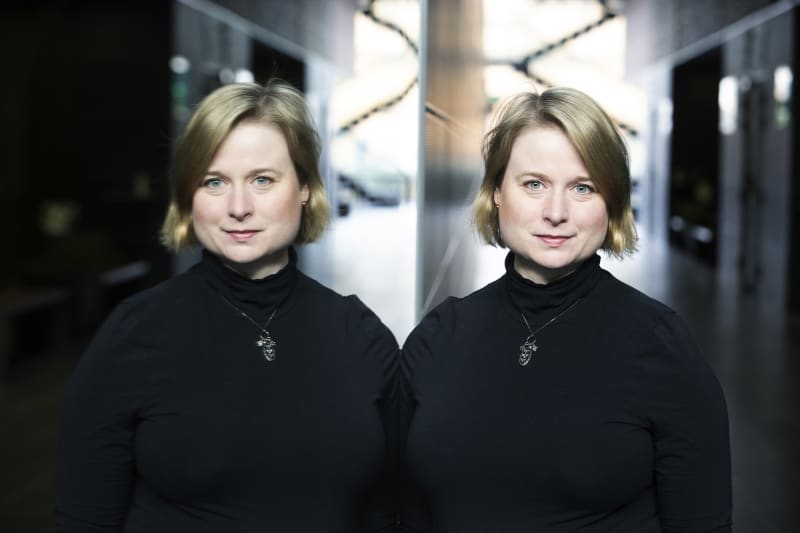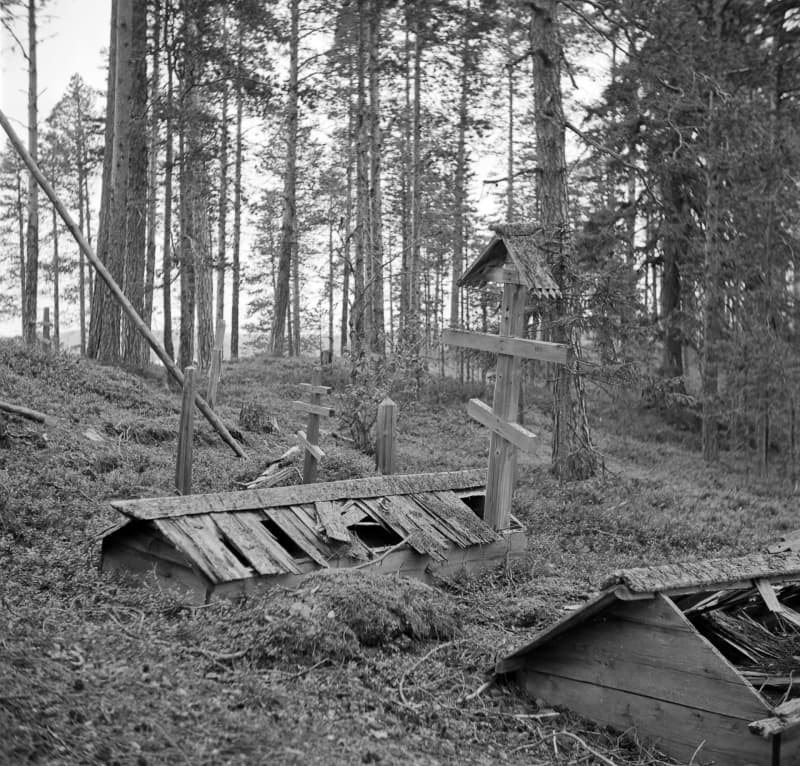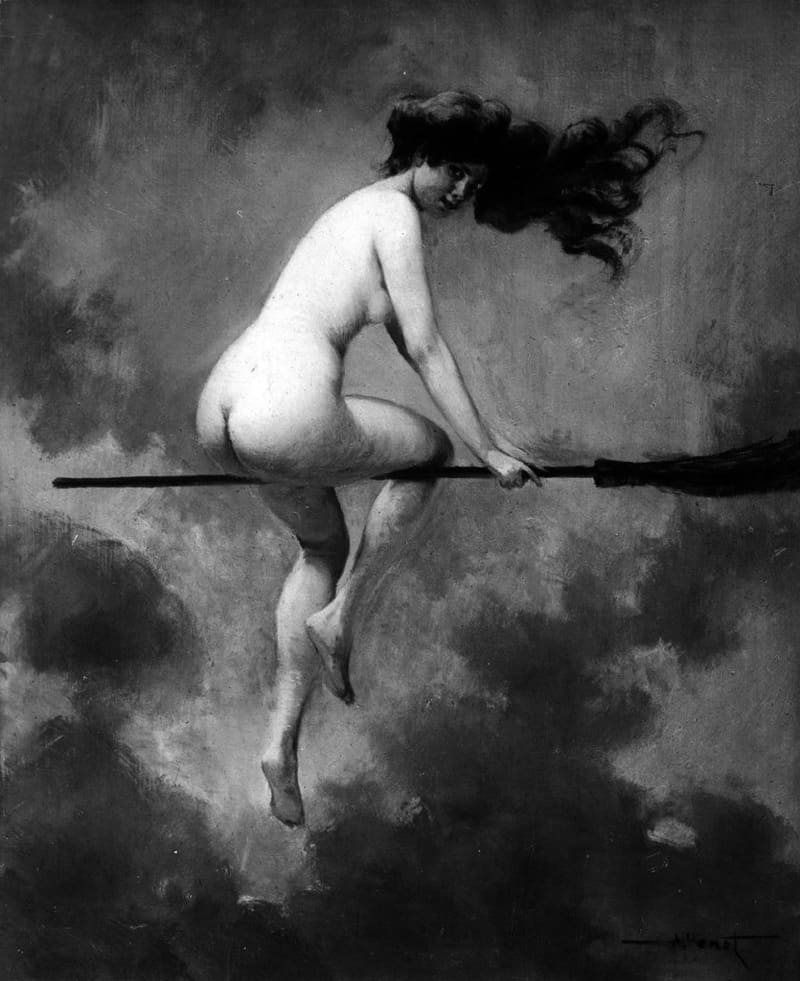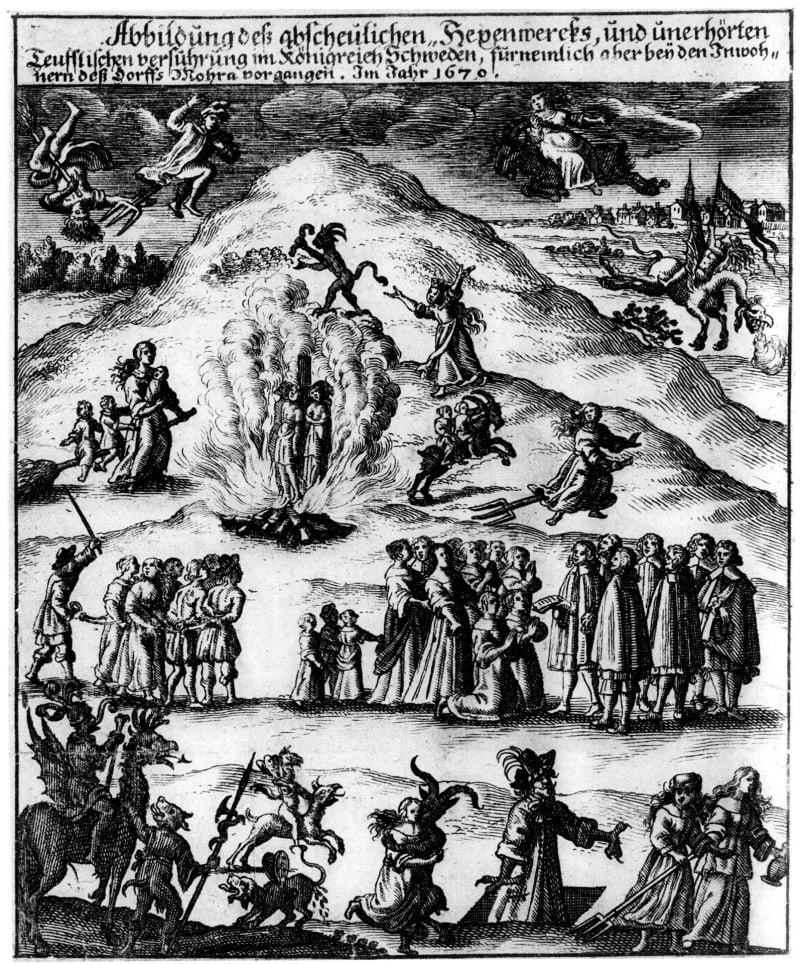
The Nordic Witchcraft book opens up the history of Finnish and Nordic magic and witchcraft. Researcher Karolina Kouvola says that magical thinking has still not disappeared from society.
As late as the 19th century, cemetery customs were still practised in Finland. Human bones were believed to contain the supernatural power of the dead, or people.
Low graves, animals prowling and digging up the soil in cemeteries, and heavy rains, for example, often resulted in the remains of human bodies being deposited on the ground, which were easy and inexpensive to recycle. Sometimes human bones were also dug out of the graves themselves.
In the spring, at sowing time, the bones were sprinkled on the field to enhance the growth of the crop. In autumn, at the end of the harvest season, the bones were taken back to their resting places.
Bones stolen from cemeteries were not only used for a good purpose: they may also have been used for witchcraft and it was believed that they could turn a person into a mindless, zombie-like creature like the dead.
Magic has its own laws too
From the point of view of southern Europe, the North has always been *terra incognito*, i.e. an unknown land: the cradle of magic, which has not only been exoticized, but also feared at times.
– Sayings and colloquialisms often refer to the fact that the north is the wind direction of evil. At the same time, however, people have gone to Pohjola to look for mythical information and spells that have already been forgotten in the rest of the world, says Karolina Kouvola.

The *Northern witchcraft* book covers various manifestations of magic from the Viking age through the witch trials to pre-modern times. According to Karolina Kouvola, the magical worldview works with its own logic and laws, regardless of the era.
– No matter how well-made the sweater is, quite a lot of people say straight out that no thanks, I won’t wear that garment. This is a classic example of contagion magic, i.e. it is thought that something inexplicable can be caught from a person, which makes them sick or harms them, says Kouvola.
In the same way, for example, a single hair describes the whole person in magical thinking, and just a hair loss is enough to do evil and harm.

Frogs buried in small coffins
An essential part of magic includes casting spells and magic, which also has macabre features.
Courtship magic was popular because society was characterized by family and relationship-centeredness. An attempt was made to carry out lemmennostatus with, among other things, a ritual in which holes were first poked in the frog and then the animal’s fur was thrown into an anthill. When the ants had eaten away the frog’s flesh, its bones were ground, baked into bread, and said:
*Put the cake in the oven*
*your cake to eat,*
*my man to get.*
In ancient Finland, the frog was also associated with other magical properties. Even at the beginning of the 20th century, frogs were placed in tiny coffins according to precisely defined instructions, which were buried, for example, near barns to keep livestock healthy. The coffin had to be alder or pine, and the frog’s legs were tied together with red thread as a symbol of blood and life.
Many houses also had a pet snake to bring good luck, and a pike could peck in the well. With them, on the other hand, you can think about what was ultimately magic and what wasn’t, Kouvola reminds.
– It has been common sense that if the pike has not been doing well in the well, it has not been worth using the water. Sometimes the definitions of magic come from outside: we think that a pike in a well is a magical thing, even though it is a practical solution and an everyday habit, says Karolina Kouvola.
Different body rites were also often thought of as magical things in Finland. Touching a woman’s menstrual blood, for example, could guarantee a man going into the forest with predatory luck: menstrual blood was associated with a woman’s strength, i.e. strength.
– A strong crowd has been seen in menstrual blood and milk, which has referred to being on the other side of everyday reality. Giving birth was once a risky event that affected the balance of the community, which also involved breast milk. Menstrual blood, on the other hand, is understood as a gate between the ancestors and this world, Karolina Kouvola continues.

Liniment from newborn babies
In a hunting and agrarian society, for example, efforts were made to protect livestock with the help of spells and magic. The most skilled housewives could create a creature called para to help them, which was used, for example, to steal happiness related to dairy products, i.e. the well-being of animals, for example.
The 17th century was the golden age of witch trials, and the para could also be associated with the witches’ sabbath. Women were condemned in the witch trials for taking the neighbor’s luck to the Devil with the help of a healer.
– The worst explanation model of all was that the person practicing magic had made an alliance with the Devil, i.e. the enemy of the soul.
Kouvola recalls that the deterrence of witch trials was very strong.
– If you got a reputation in the community as a malicious witch, you could very easily find yourself in the courts. The bad reputation was increased by swearing and threats related to witchcraft. In the worst case, after innocent forceful words, someone happened to get sick, so the courtroom was waiting.

Not all accusations of witchcraft sank like a knife in melted butter, but the clergy and the authorities also examined them critically.
In the 18th century, it was no longer necessarily believed in court that a person had used a broom to sweep a witch’s hat, and that his skin had been anointed with liniment, one of the ingredients of which was newborn children. Or that during sex orgies, all participants had to kiss the goat-horned devil’s anus.
Witchcraft has moved to the web
The rich and varied magic tradition of Finnish society has not disappeared anywhere. In the past, it was thought that there is only a certain amount of happiness in the world, so it wasn’t really worth showing off your own happiness to others, lest someone get jealous and something bad happen.
This type of thinking, even based on modesty, is still valid in Finland. At Midsummer, magic is done again, and at New Year, tin is cast. Kouvola questions whether pewter casting is really believed in, and whether similar things were really believed in the past world as well.
– In the past, bonfires were lit so that witches wouldn’t see the smoke fly and fall from the sky. Whether it was believed that witches with their lutes can be found in the fields is another matter entirely. That belief was not necessarily completely concrete at the time either, reflects Karolina Kouvola.
Nowadays, witchcraft and magic are doing well, especially on social media.
– Magical activity always finds new ways and technologies to exist. Witchcraft and magic have never disappeared anywhere.
Also listen to Kulttuuriykkönen’s discussion on the topic:
